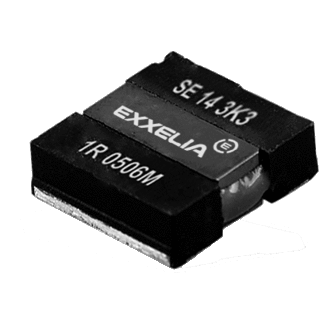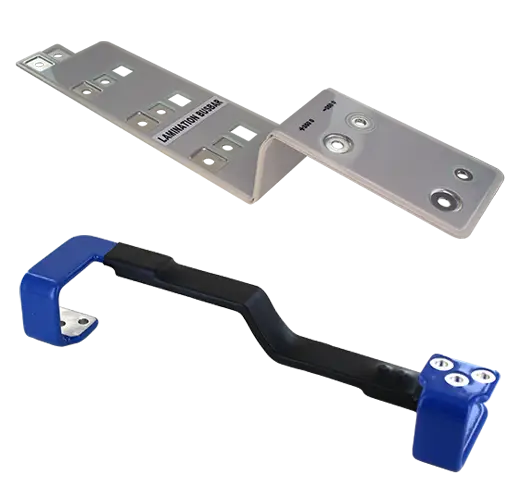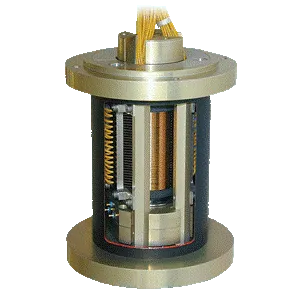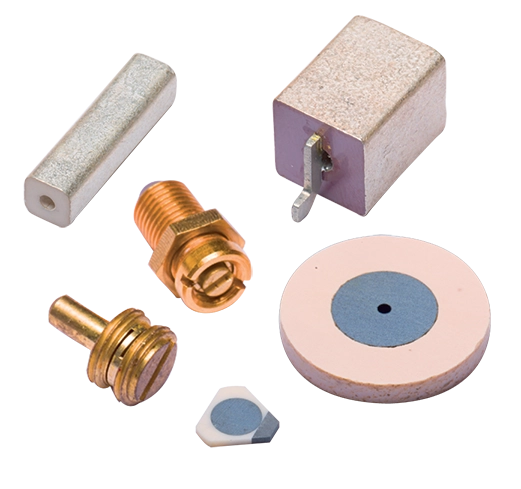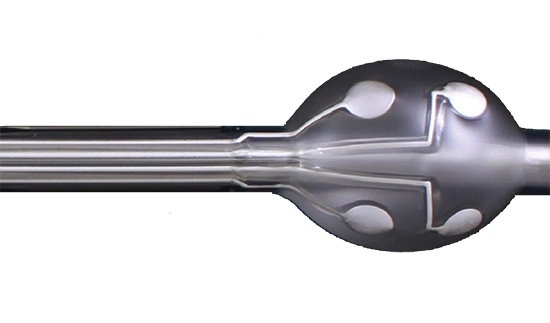

Discover powerful aluminum electrolytic capacitors at Railtex Booth #H02, ideal for energy storage in rail systems. Long lifetime, high voltage, and versatile.
Exxelia is pleased to exhibit at RailTex 2017 in Birmingham, United-Kingdom. From May 9th to 11th at booth #H02, Exxelia will be showcasing innovative ranges of Aluminum Electrolytic capacitors for use in both rolling stock and signaling...
Felsic HV, long lifetime and high voltage screw terminal aluminum electrolytic capacitor
 The Felsic HV family of aluminum electrolytic screw terminal capacitors provides great performances in energy density and ultra-long lifetime. For instance, 6 800µF @450V fit into a volume of Ø77 x 220mm and can withstand 200,000h between 0 to 70° under 37Amps, which makes them the perfect choice for use in rolling stock traction systems or the CVS. The family also has one of the lowest ESR for aluminum capacitors with less than 10m0hms in most cases. Products are available for voltages from 160 to 450 Vdc, and offer capacitance values from 1500μF up to 47 000μF offering the best compromise between reliability and compacity.
The Felsic HV family of aluminum electrolytic screw terminal capacitors provides great performances in energy density and ultra-long lifetime. For instance, 6 800µF @450V fit into a volume of Ø77 x 220mm and can withstand 200,000h between 0 to 70° under 37Amps, which makes them the perfect choice for use in rolling stock traction systems or the CVS. The family also has one of the lowest ESR for aluminum capacitors with less than 10m0hms in most cases. Products are available for voltages from 160 to 450 Vdc, and offer capacitance values from 1500μF up to 47 000μF offering the best compromise between reliability and compacity.
Snapsic HV, high voltage snap aluminum electrolytic capacitor
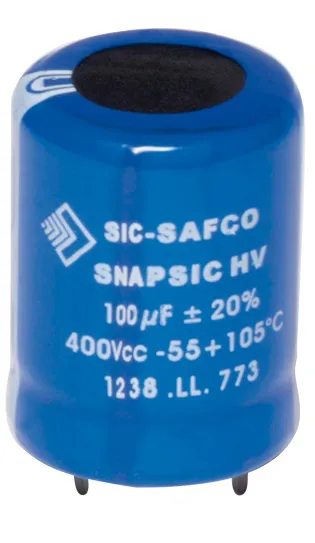 Because it covers voltages from 16 to 500Vdc and temperatures up to +105°C, and because it is customizable, the Snapsic HV series is very versatile and can cover all needs of energy storage in medium voltage both in rolling stock equipment or signaling systems. Thanks to its high ripple current, it is often used in SMPS and HVAC rolling stocks units with a typical variation of 470µF @450V in Ø35 x 50mm, as well as in various signaling control units, where a smaller package can be used with for example 1 000µF @250V in Ø35 x 40mm.
Because it covers voltages from 16 to 500Vdc and temperatures up to +105°C, and because it is customizable, the Snapsic HV series is very versatile and can cover all needs of energy storage in medium voltage both in rolling stock equipment or signaling systems. Thanks to its high ripple current, it is often used in SMPS and HVAC rolling stocks units with a typical variation of 470µF @450V in Ø35 x 50mm, as well as in various signaling control units, where a smaller package can be used with for example 1 000µF @250V in Ø35 x 40mm.
Prorelsic, the long lifetime axial aluminum electrolytic capacitors for signaling equipment
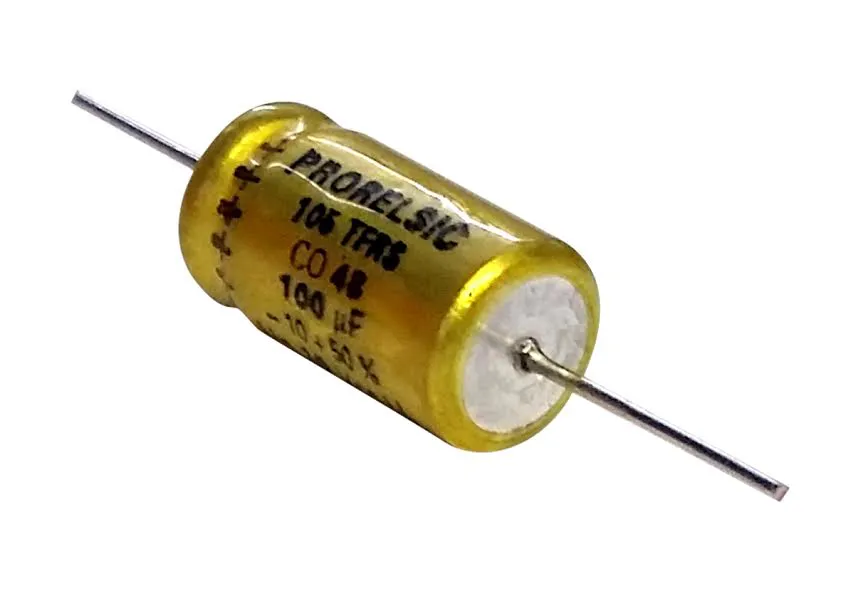 Exxelia’s range of aluminum electrolytic solutions would not be complete without the axial leaded Prorelsic series. These capacitors show high ripple current and extra-long life-time with 20 000h @105°C. The most common sizes are Ø8.5 x 19mm, Ø10 x 19mm and Ø12 x 30mm, with typical values of 47µF @40V, 100µF @25V and 47µF @100V respectively. Prorelsic capacitors are perfectly suited for smoothing, coupling/decoupling and energy storage functions in railway signaling equipment.
Exxelia’s range of aluminum electrolytic solutions would not be complete without the axial leaded Prorelsic series. These capacitors show high ripple current and extra-long life-time with 20 000h @105°C. The most common sizes are Ø8.5 x 19mm, Ø10 x 19mm and Ø12 x 30mm, with typical values of 47µF @40V, 100µF @25V and 47µF @100V respectively. Prorelsic capacitors are perfectly suited for smoothing, coupling/decoupling and energy storage functions in railway signaling equipment.


